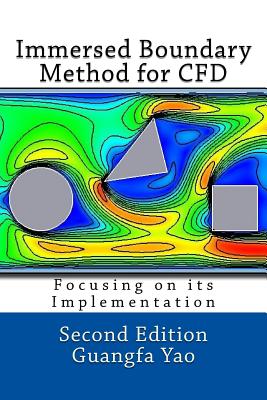Immersed Boundary Method for CFD: Focusing on its Implementation

Immersed Boundary Method for CFD: Focusing on its Implementation
The immersed boundary method has become increasingly popular in modeling fluid-structure interaction using computational fluid dynamics. It does this by adding a body force term in the momentum equations. The magnitude and direction of this body force assure that the boundary condition on the solid-fluid interface is satisfied without invoking the body-fitted numerical methods to impose the boundary condition on a solid-fluid interface. This eliminates the significant effort involved in the usually challenging task of generating a body fitted mesh. The governing equations for fluid flow with or without moving solid bodies are solved using a fixed and non-body conforming Cartesian mesh. There are many variations of immersed boundary methods with different implementations to calculate the body force term. A few popular implementations are introduced in this book. Related equations are derived and presented in detail. As examples, a few approaches are formulated using different methods to calculate the body force term, with related validations. Immersed boundary methods are usually coupled with fractional step methods to model fluid flow. One fractional step method is introduced in this book. The related discretized equations are derived in detail. The treatment of domain boundary conditions is also discussed. In immersed boundary methods, the stationary or moving solid bodies in a computational domain are embedded in the fixed mesh. Solid bodies need to be represented or tracked. Interpolation and/or extrapolation need to be performed to calculate the body force term and impose the velocity boundary condition on a solid-fluid interface. In some approaches, a solid volume fraction is also needed in cells containing some solid. The level set method, as a powerful tool that is usually used to track a free surface flow, and construct and manipulate complex geometries, is chosen in the book to perform these tasks. Representing and tracking solid bodies, performing interpolation and extrapolation, and calculating a solid volume fraction are discussed in detail, using the level set method. This book focuses on the implementation of the immersed boundary methods by providing detailed derivations of related equations to facilitate the readers' understanding, so that they may learn the basics and write their own code.
PRP: 1077.25 Lei
Acesta este Pretul Recomandat de Producator. Pretul de vanzare al produsului este afisat mai jos.
969.52Lei
969.52Lei
1077.25 LeiLivrare in 2-4 saptamani
Descrierea produsului
The immersed boundary method has become increasingly popular in modeling fluid-structure interaction using computational fluid dynamics. It does this by adding a body force term in the momentum equations. The magnitude and direction of this body force assure that the boundary condition on the solid-fluid interface is satisfied without invoking the body-fitted numerical methods to impose the boundary condition on a solid-fluid interface. This eliminates the significant effort involved in the usually challenging task of generating a body fitted mesh. The governing equations for fluid flow with or without moving solid bodies are solved using a fixed and non-body conforming Cartesian mesh. There are many variations of immersed boundary methods with different implementations to calculate the body force term. A few popular implementations are introduced in this book. Related equations are derived and presented in detail. As examples, a few approaches are formulated using different methods to calculate the body force term, with related validations. Immersed boundary methods are usually coupled with fractional step methods to model fluid flow. One fractional step method is introduced in this book. The related discretized equations are derived in detail. The treatment of domain boundary conditions is also discussed. In immersed boundary methods, the stationary or moving solid bodies in a computational domain are embedded in the fixed mesh. Solid bodies need to be represented or tracked. Interpolation and/or extrapolation need to be performed to calculate the body force term and impose the velocity boundary condition on a solid-fluid interface. In some approaches, a solid volume fraction is also needed in cells containing some solid. The level set method, as a powerful tool that is usually used to track a free surface flow, and construct and manipulate complex geometries, is chosen in the book to perform these tasks. Representing and tracking solid bodies, performing interpolation and extrapolation, and calculating a solid volume fraction are discussed in detail, using the level set method. This book focuses on the implementation of the immersed boundary methods by providing detailed derivations of related equations to facilitate the readers' understanding, so that they may learn the basics and write their own code.
Detaliile produsului








